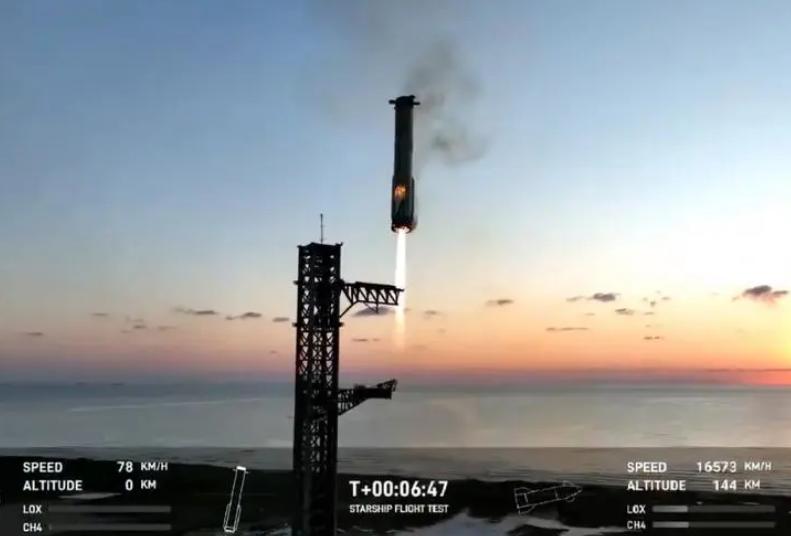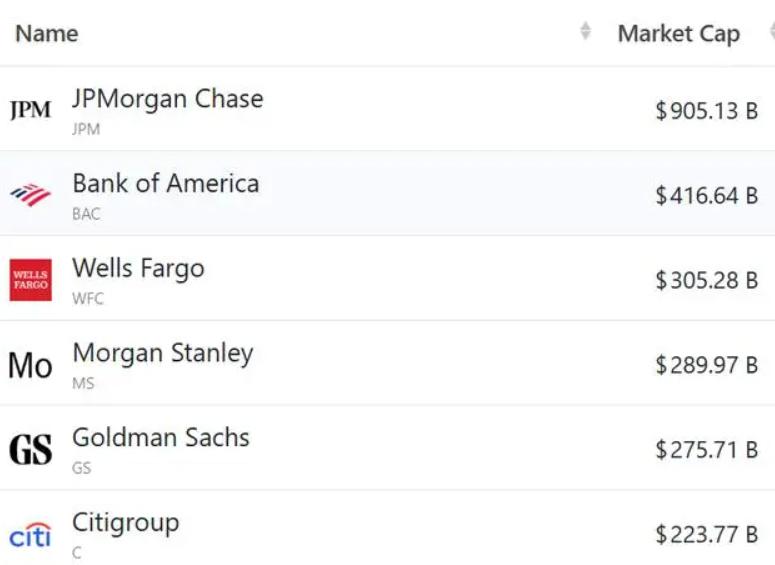
Recently, Musk's space exploration technology company SpaceX's new generation of heavy-lift launch vehicle "Starship" launched, this is the fifth test flight of "Starship", will be the first attempt to use the launch tower's robotic arm (also known as "chopsticks") to capture the booster in mid-air to achieve recovery and success. Six minutes after launch, the first-stage super-heavy rocket detached from the starship and returned to be held in the air by a pair of giant metal pliers, which SpaceX calls "chopsticks." After that, the starship stage two continued to fly normally, and about 1 hour and 5 minutes after the launch, the stage two successfully splashed down in the Indian Ocean, successfully completing the scheduled mission.
This technology has a profound impact on the field of space, one is the technical impact, this technology to achieve high precision recovery of rocket boosters, which requires the rocket control system to have high precision navigation and positioning capabilities to ensure that the rocket can maintain stability and accuracy during landing. The size, flexibility and control system of the robotic arm are all key to realizing this technology. SpaceX has successfully developed a robot arm that is 36 meters long and 18 meters high, and is equipped with high-precision sensors and control systems to achieve accurate grasp and recovery of rocket boosters. At the same time, the "chopstick" rocket clamping technology involves high-precision control systems and sensors to ensure that the robotic arm makes an accurate response in a very short time. This high-precision operating requirement increases the complexity of the technology and can lead to higher failure rates and maintenance costs. The robotic arm needs to move up and down the launch tower orbit to nimbly approach and grab the falling rocket, adding difficulty and uncertainty to the operation.
The second is the impact of cost-effectiveness, in traditional rocket launches, rocket boosters are usually discarded after the completion of the mission, and the "chopstick" rocket technology allows rocket boosters to be reused, thus reducing the cost of making new rocket boosters for each launch. The rapid recovery and reuse of rocket boosters can also improve the efficiency of space launches. While traditional rocket launches need to wait for the rocket booster to be transferred from the recovery site to the launch site and undergo a series of checks and tests, the "chopstick" rocket technology avoids this tedious process, allowing the rocket to be prepared for the next launch more quickly. However, although the "chopstick" rocket technology helps to reduce the cost of space launch and promote the commercialization process in the space field, the manufacturing, maintenance and upgrade costs of the robotic arm may be high. If problems arise during the implementation of the technology, additional funds and resources may be needed to fix and improve it.
Third, the impact of external factors and the environment, during the rocket landing process, wind and other external factors may have an impact on the precise operation of the robot arm, leading to grasp failure or rocket dumping, explosion and other serious consequences. During the rocket landing and grasp process, if the robot arm is operated improperly or malfunctioned, it may cause the rocket to tip over or explode on the launch tower, posing a serious threat to personnel and facilities. If the bearing capacity or stability of the robot arm is insufficient, it may cause deformation or damage to the robot arm, which will endanger the safety of the rocket and launch tower. The rocket will produce a large impact force when landing, and if it is not effectively dispersed, it can cause damage to the launch tower or topple the rocket. Therefore, it is necessary to take a series of dispersion and buffer measures (such as the installation of hydraulic buffer mechanism and other load reduction and vibration reduction devices) to carry and disperse part of the impact force. Adverse weather conditions (such as lightning, heavy rain, etc.) can cause damage to the robotic arm and rocket, increasing the risk of the mission. For example, lightning may cause damage to the electrical system of the robotic arm or rocket, and heavy rains may cause rust or corrosion of the components of the robotic arm or rocket. The high speed and high temperatures during rocket landing can also cause damage or pollution to the surrounding environment.
To sum up, Musk's technology of "chopsticks" holding rockets has brought many advantages, but it is also accompanied by certain dangers. In order to ensure the successful application of the technology and promote the rapid development of the space field, it is necessary to continue to strengthen the efforts in technology research and development, optimization of operational processes, and improvement of safety and reliability. At the same time, it is also necessary to pay attention to the impact of external environmental factors on the implementation of technology, and take appropriate measures to reduce risks.

Driven by the Trump administration's push to relax financial regulations and the recovery of investment banking business, the market value of the six major banks in the United States has cumulatively increased by approximately 600 billion US dollars by 2025.
Driven by the Trump administration's push to relax financia…
On Christmas evening, U.S. President Trump posted on social…
According to multiple foreign media reports, the recent fin…
The middle class, once regarded as the cornerstone of Ameri…
On December 19th local time, the US military launched a lar…
The Boxing Day sunshine should have cast a false glow of pr…